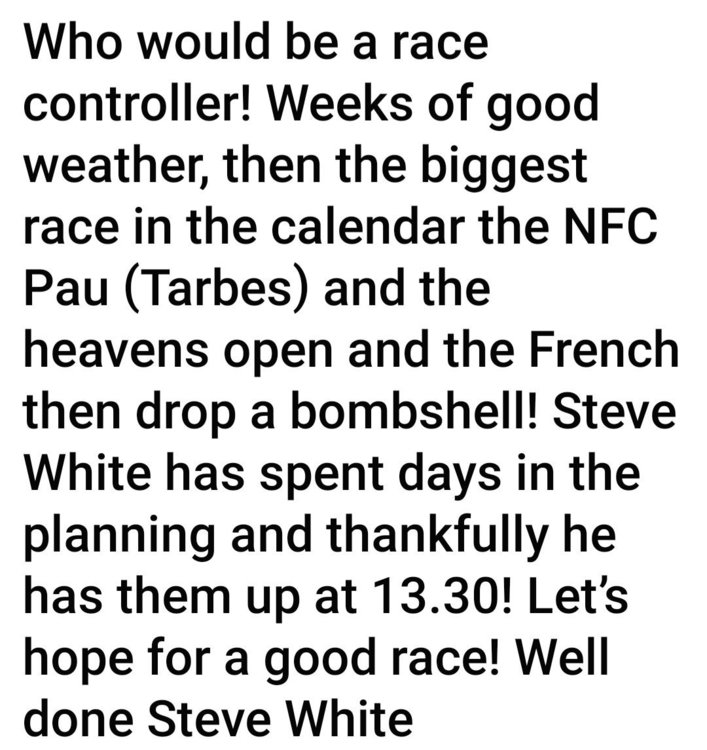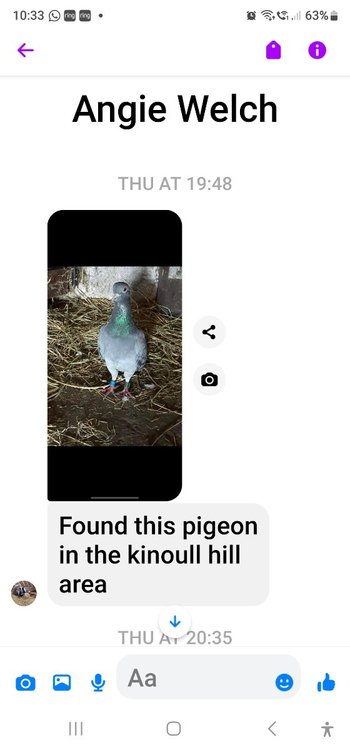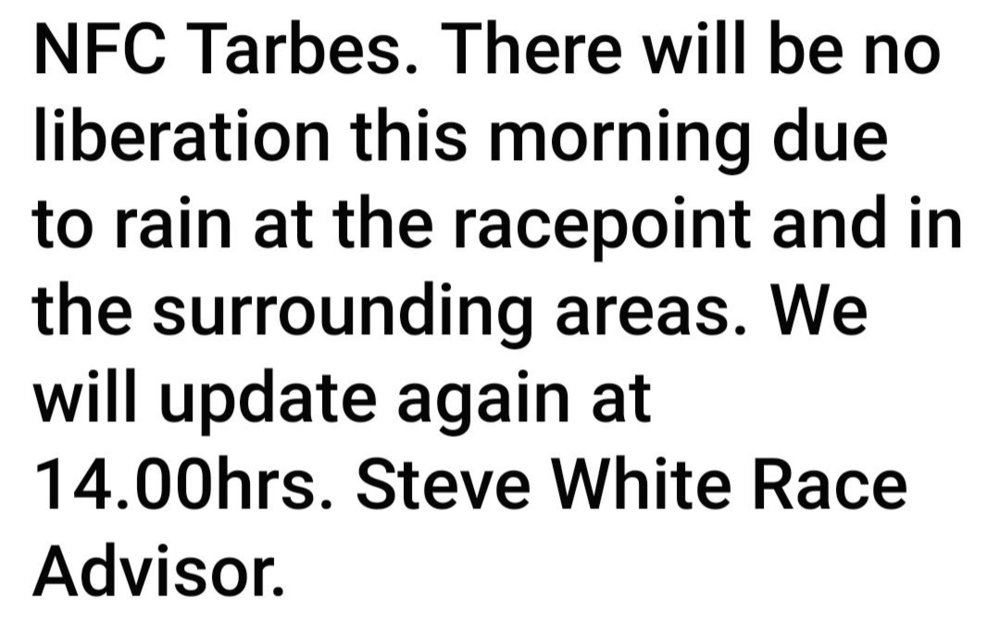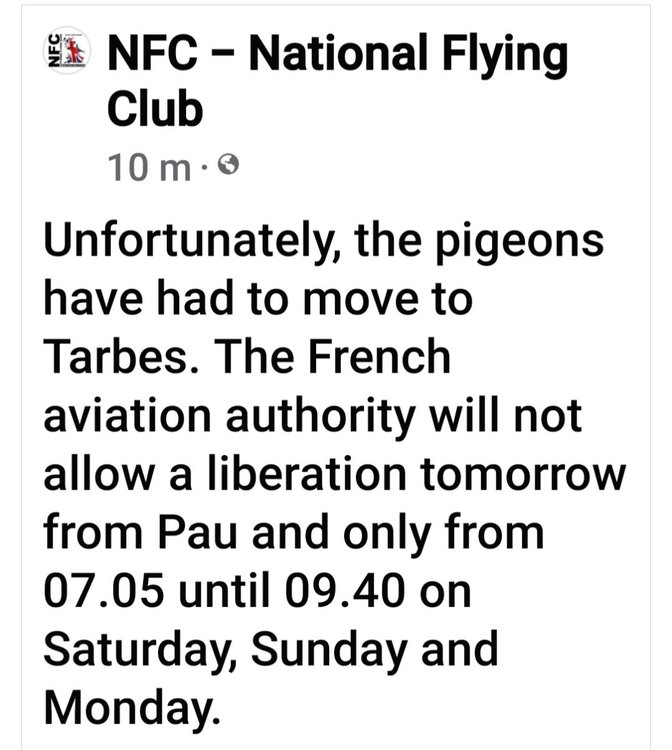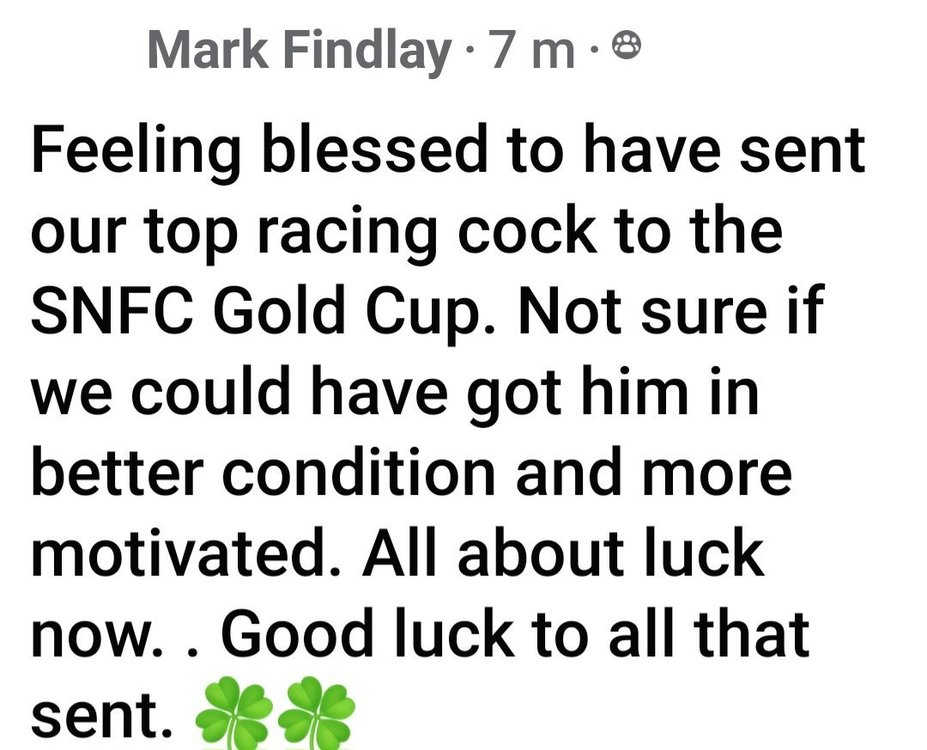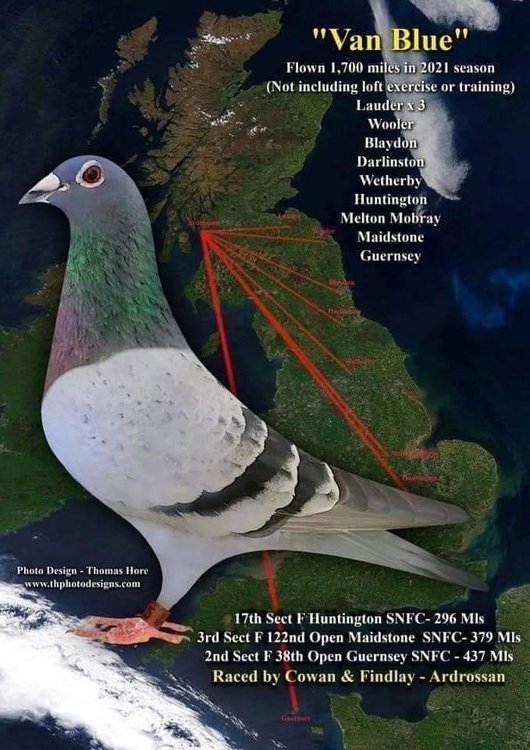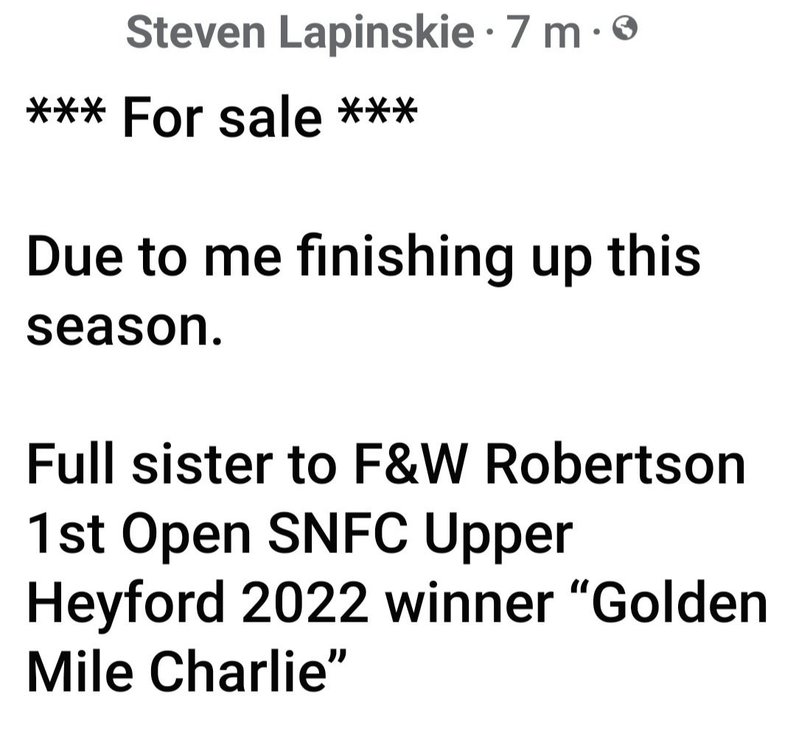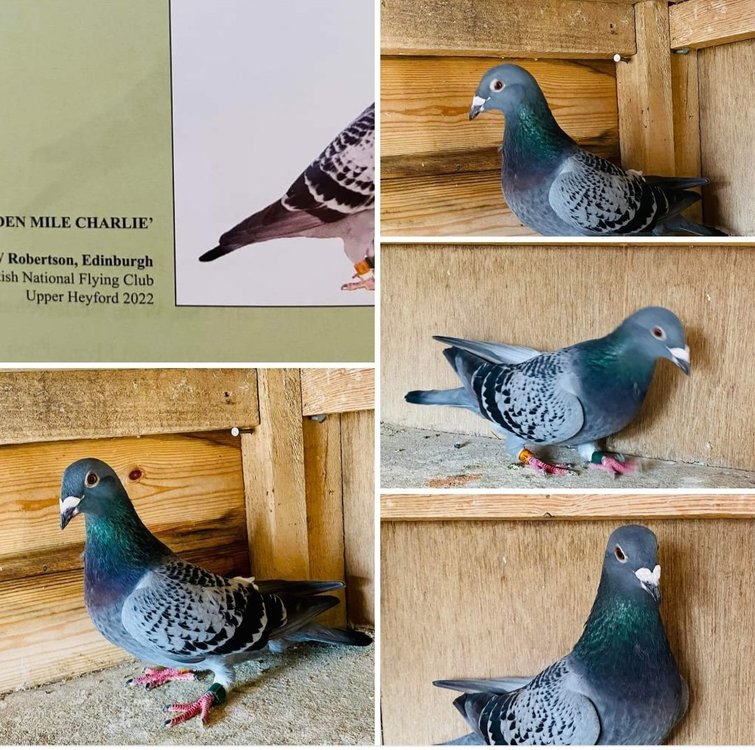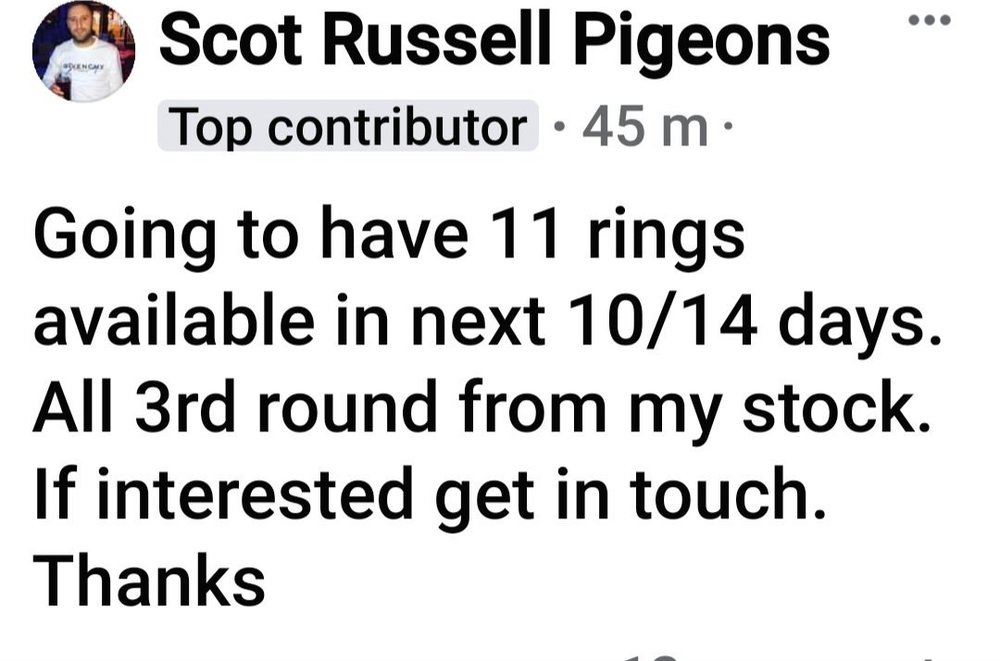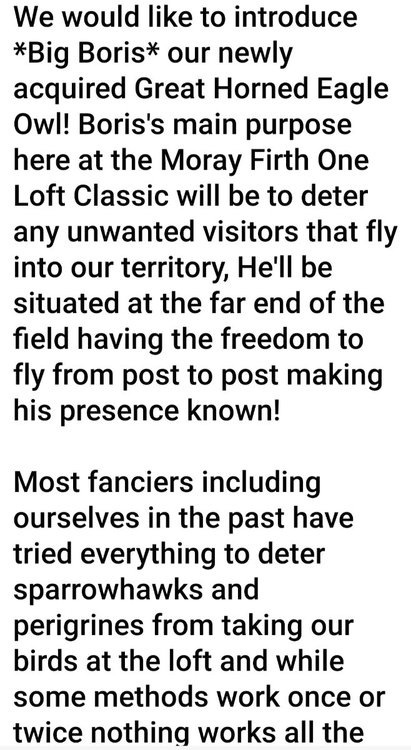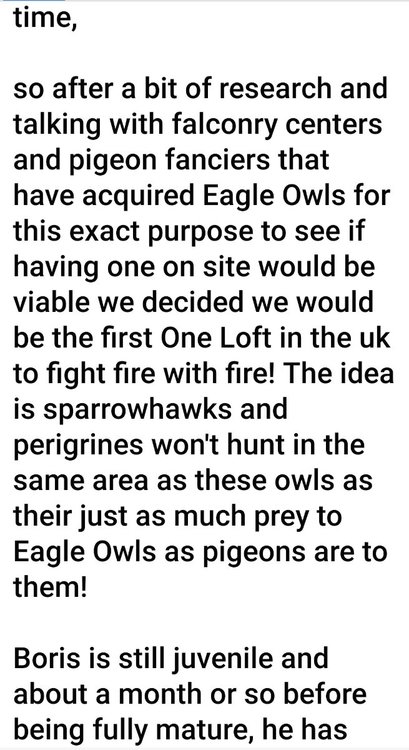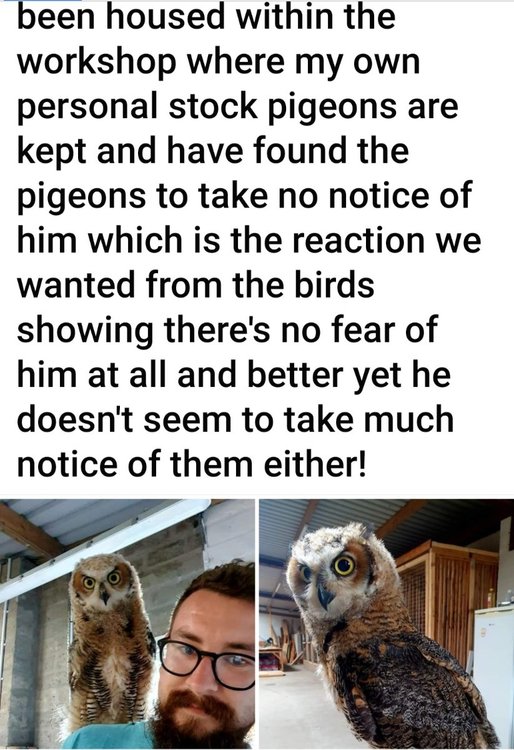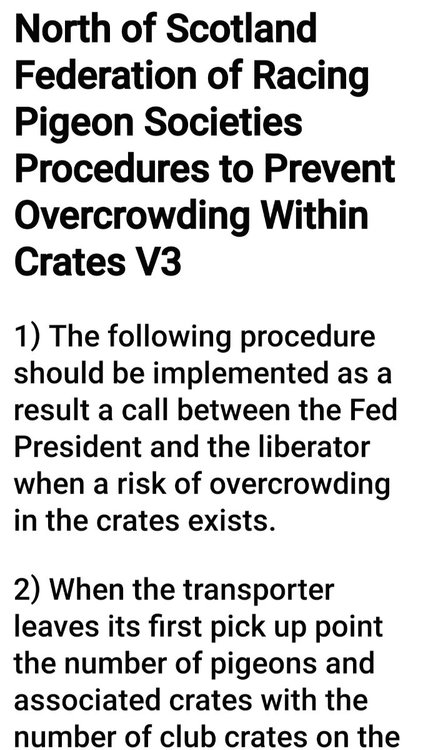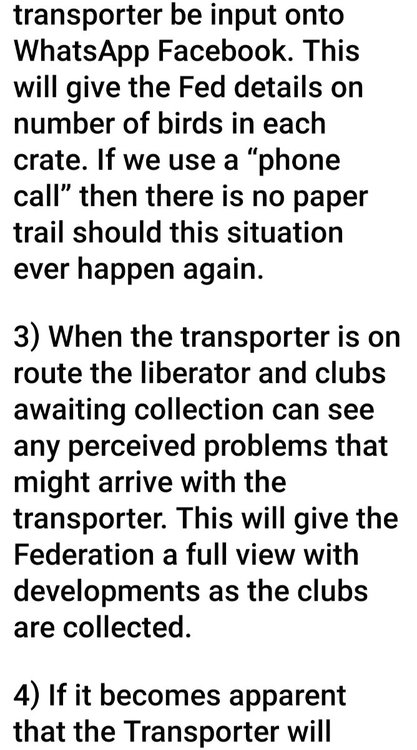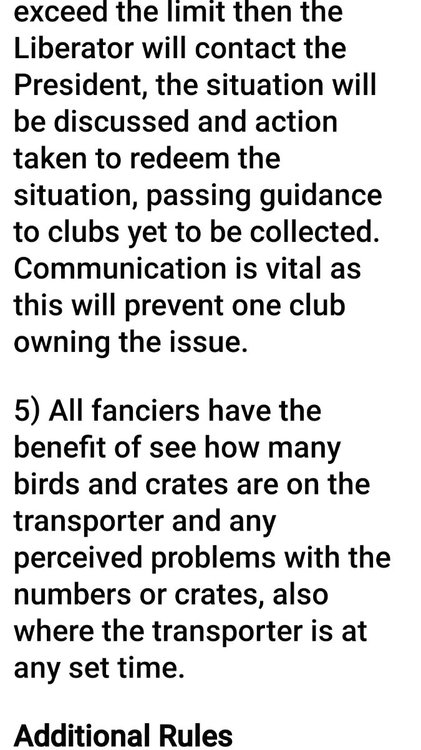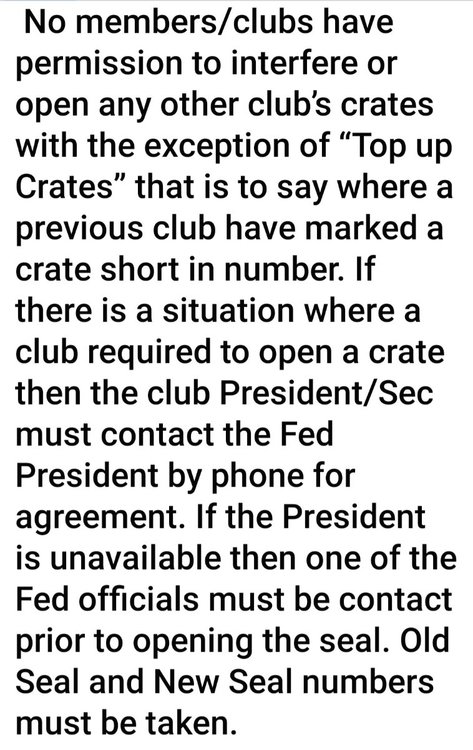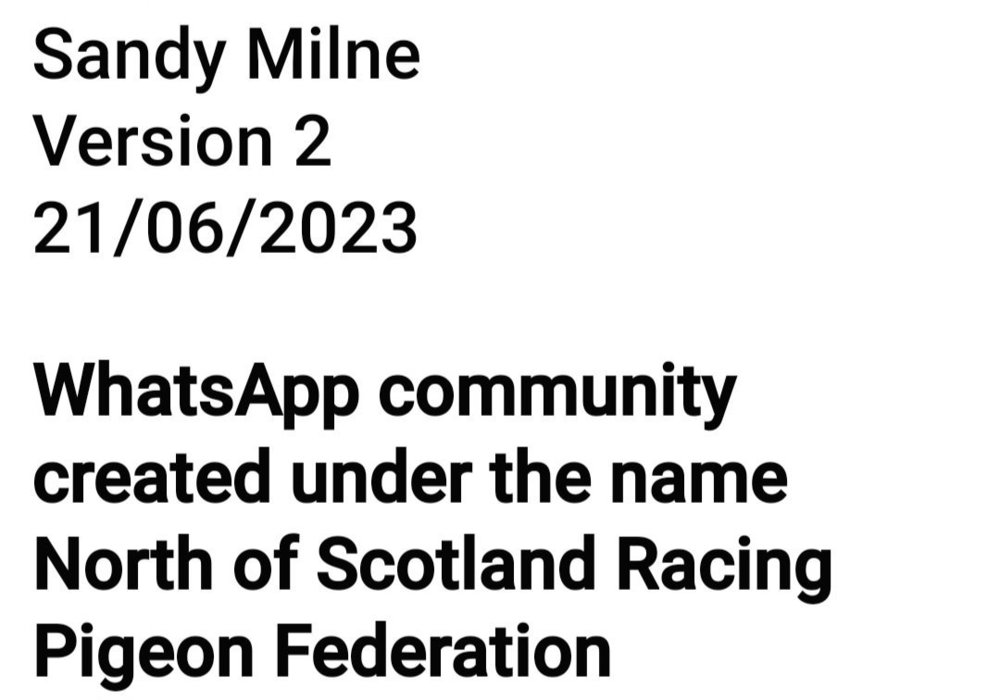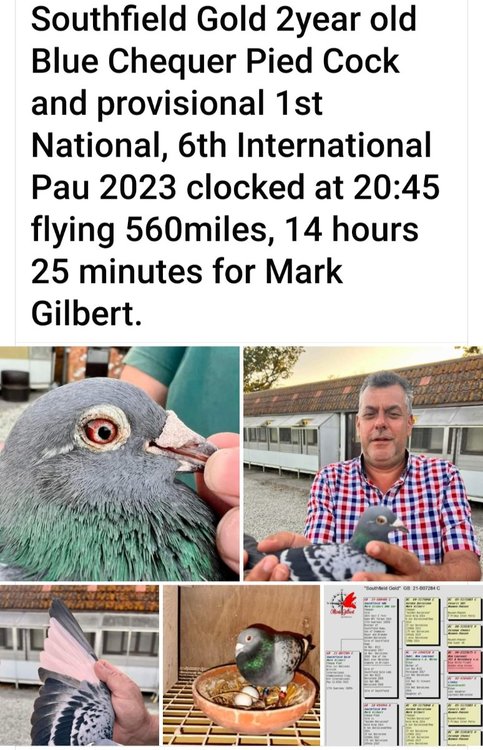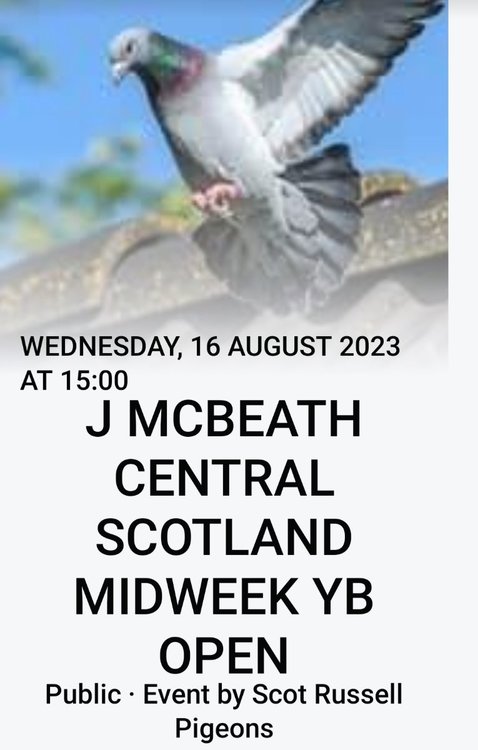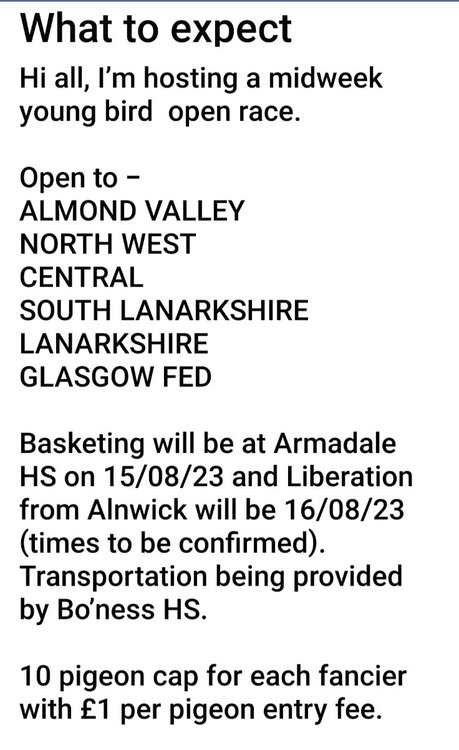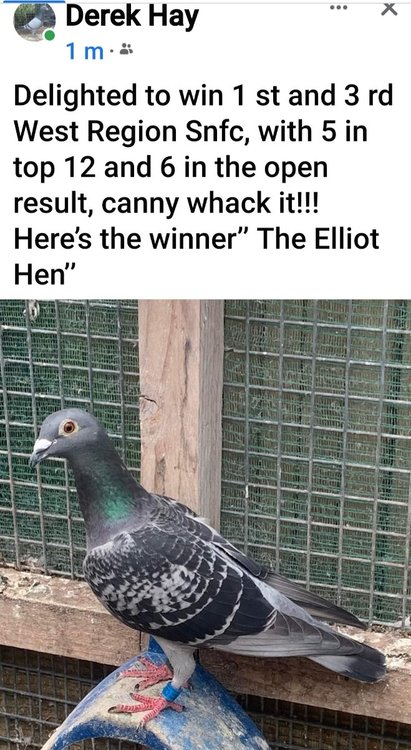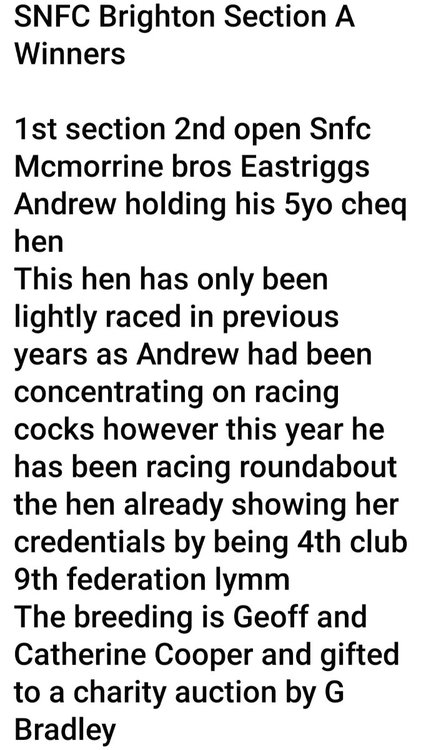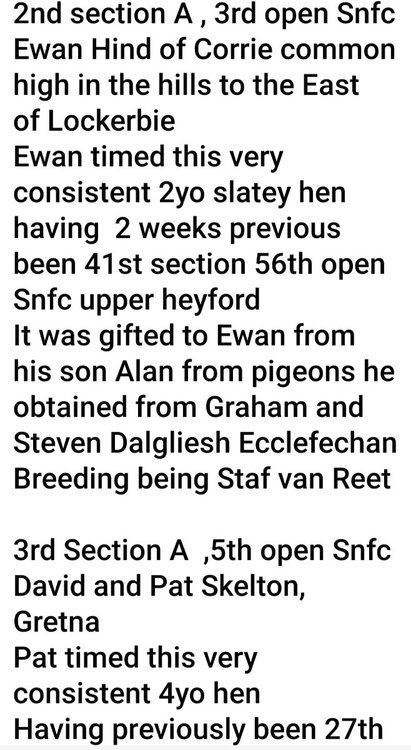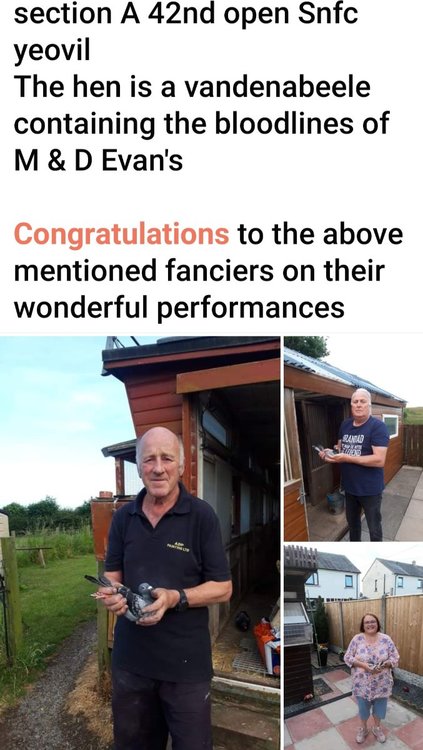The Joe Murphy Column
1
I came across an article on John Roach & son of Broxburn which I found very
interesting and I have taken a few points out of this story. John had been amongst
pigeons all his days but wanted to provide a hobby for my two boys, he decided to
start a loft in earnest. It was always been his belief that boys with an absorbing hobby
were never in trouble. They soon had a loft built but the next step, which was to stock
it gave them some headaches. Like everyone else starting up in the sport; they made
the same mistake as hundreds before us. That was to accept pigeons from Tom-Dick
and Harry. ‘John said ‘This was the worst mistake that any novice can make and it
took us six years to prove it’. By far the best thing to do was to purchase two pairs
from a well-known family – breeding with these and these only--you would hit a
winning streak long before the other method. He wrote; ‘We never knew any success
until we purchased 2 pairs of ‘Logans’. These were kept together, breeding grand-
daughter back to sire until we thought it was time to introduce a cross. This was an
‘Osman Fell’ hen bred by the late John Hendry of Broxburn, and was presented to
John’s wife by a friend who was leaving the sport. They coupled this hen with a little
Logan cock, in their opinion one of the gamest little birds they ever had, who lived to
20 years of age. Unfortunately, the hen died but they had left quite a few good birds.
The hen herself won 1 st club 82 nd open Dol whilst the cock had a place in every race he
was sent to. 1659 the SNFC Nantes winner was bred off them as was his brother
90689, 76 th section 122 nd open. Whilst another late bred 62-9386 won 9 th club
Leachworth; 4 th club 11 th fed Lewes, 1964; the following year won 11 th Leachworth,
12 th Lewes, in 1966 won 15 th Leachworth, 1 st club 14 th federation Lewes, 1967; 6 th club
Lewes – looking back through some records I find that we have had 86 places in 62
races, not a bad show in a strong club like ours. Our method of pigeon husbandry is I
suppose the same as hundreds more; the birds, 12 pair, are housed in a 14 x 8-foot loft
-with an open front and a large louvre vent in each gable, thus the air in the loft is
constantly in motion. It is cleaned out twice a day. After each cleaning a little
dehydrated lime is brushed into all cracks and crevices. This we find is the best pest
deterrent we know. Birds young and old are hopper fed on good hard beans only. This
again we find keeps the birds on the light, lean and hard side that we think is best for
racing. A little seed is used for trapping purposes only. The drinking water is changed
twice daily (this is where a good wife comes in handy). As for green’s stuff, I am
fortunate in having a large vegetable garden and here all the birds roam and choose
their own salad. Training is voluntary, half an hour each morning and evening. There
are no gimmicks or short cuts. We like to have the birds sitting ten days for each race.
The moult, This is not much man can do so in the circumstances it is best to leave it to
mother nature. Young birds if fit, are raced right out to the last race (200 miles) the
basket being the best gauge of what not to keep; John Roach’.
Results
Arbroath Racing Pigeon Club
News from Charlie Cameron who informs us that 5 members sent 117 birds to these
were liberated into a light north east wind. Charlie and son Glen took the first 3 places
with Les McKay in 4 th place and Chic & Ann Carrie took 5 th place.
Almond Valley Federation
News from secretary Lynn Stewart, who informs me that 1119 birds were liberated at
Wetherby at 11-10 hours. Topping the federation are Bald & Johnstone of Balerno
with West Calder’s A Robb taking 2 nd place. S McArdle of Carnwath is 3 rd with West
Calder’s John Bird takes 4 th spot. His club mate J Hadfield is 5 th with M Jackson of
The Joe Murphy Column
2
Bonnybridge takes 6 th place. J Fairley of Balerno is 7 th with T Gavin of Fauldhouse
club taking the next 3 places.
Balerno 81 birds; 1 st Bald & Johnstone 1462. 2 nd J Fairley 1422. 3 rd C Ross 1400. 4 th
Bald & Johnstone 1388.
Bonnybridge 274 birds; 1 st M Jackson 1423, 2 nd R & L MacDuff 1409, 3 rd I
McLelland 1396, 4 th M Jackson 1385.
Carnwath 1 st S McArdle 1448. 2 nd Thomson Bros & I Thomson 1401. 3 rd McArdle &
Thomson 1382. 4 th J Dorman 1356.
East Calder 124 birds; 1 st Burnside & Drysdale 1411. 2 nd F Jamieson & Son 1410. 3 rd
& 4 th Burnside & Drysdale 1402 & 1401.
Fauldhouse 292 birds; 1 st 2 nd & 3 rd T Gavin 1421.143, 1421.143, 1420.560; 4 th
Colligan & Hope 1417.
West Calder 213 birds; 1 st A Robb 1452. 2 nd J Bird 1426. 3 rd J Hadfield 1425.4 th J
Burnside 1416.585
Dundee & District Flying Club
News from Brian Donnely on the Wakefield race flown on the 20 th May; Hi Joe, For
our 5 th race of the season we were at Wakefield, around 207 miles to most club
members. We had 13 members sending 271 birds these were liberated at 9.00 am into
a light north wind. First and 2 nd club is the inform loft of John Wiseman [who also
topped the federation for the 2 nd week running too!]. John’s winner on a velocity of
1496.7 ypm is a blue white flight yearling hen flown on the roundabout system. She is
a full sister to John’s winner from Darlington last week, being bred from a pair of
Micky Collin’s birds, sire is a Stefan Lambrecht’s / Hasendoncke and the dam is a
granddaughter of ‘Donkere Leo’. John’s 2 nd club on 1496.5 ypm is another yearling
chequer hen also flown on the roundabout system, she is bred from a son of Graeme
MacKenzie’s double combine winner from Leicester. Third club on 1494 ypm is
Danny Henderson; whose timer has been a consistent performer, having won two club
1 st prizes and has also topped the federation in the past, he is of Vandenabeele
bloodlines, all four grand parents have scored 1 st national for Billy Bilsland. Our
congratulations go to John and Danny. Joe, I have added a photograph of John
Wiseman winner.
Fife Federation of Homing Pigeon Societies
News from Geordie Todd with the Wakefield race flown on the 20 th May with the
1402 birds liberated at 11-00 hours into a light north east wind. Taking the first 2
places in the federation is J D Armour of Methilhaven club with his first 2 birds doing
1515 velocities. Dave Baldie of St Andrews is 3 rd & 5 th with Jim & Gary Peggie of
Methilhaven winning 4 th & 6 th places, Davie Jack of St Andrews is 7 th & 10 th with his
club mate John Harcus winning 8 th & 9 th open.
The East section had Methilhaven club sending 175 birds, with St Andrews sending
140 birds; the first 6 mentioned above take the east section places. The Centre section
had Kennoway club sending 270 birds with Glenrothes and Leslie sending 92 birds.
Brian Chalmers of Kennoway takes 5 of the 6 places with S Fleming of the same club
winning 3 rd place. The West Section had Novar club sending 39 birds; Crossgates 301
birds Dunfermline 217 birds and Lochgelly club 168 birds. G Bell (1) of Crossgates
wins the section with J Hynd & son taking the next 3 places. 5 th spot goes to K
Cochrane with A Simpson of Dunfermline club winning 6 th place.
East of Scotland Federation
News from Tom McEwen who informs us that the federation were at Bubwith with
the convoy liberated at 10-00am into a light north east wind. Topping the federation is
Brian Lavery of Prestonpans with a 2-year-old blue hen; taking 2 nd place is John Bird
The Joe Murphy Column
3
of the same village, with another ‘Pan’s’ fancier Dave Blair timing in a good treble to
win 3 rd 4 th & 10 th positions. Keith Howie of the ‘Pan’s’ is well to the fore winning 5 th
open. Gus Jackson of Macmerry had a great 4’ some winning 6 th 7 th 8 th & 9 th positions.
Prestonpans HS
The winner is a 2-year-old blue hen for Brian Lavery, she was bred by Jimmy Mack
of Tranent. This hen won 5 th federation from Harrowgate and 12 th federation from
Catterick. John Bird timed in a yearling hen to win 2 nd club, she was put into a nest
box a few minutes before being lifted into the race basket and this little trick worked
for John; her breeding is from a pair of Frans Zwols stock pigeons. 3 rd club is Davie
Blair who timed in a yearling chequer hen.
Pentland Hills Federation:
News from Andy Miller of the Federation Bubwith race flown on Saturday 20 th May;
with 69 lofts sending 1513 birds; these were liberated at 10-00 hours into a light north
east wind. The distance being 164-176 miles for the members.
Top spot goes to Black & Robertson of Danderhall club with their winner and
nomination pigeon doing a velocity of 1599 and winning over £411. Brian Black &
Robertson, not forgetting loft Laddie Craig, who is a great help around the loft. They
timed their 2-year-old Busschaert crossed Willie Jacobs widowhood cock bred by
Dougie Barnes from Crossgates. Joe, returns were excellent with most of the bird’s
home within the hour; regards Andy.
Kingdom Racing Pigeon Association
News from Pete Penman who wrote, ‘Hi Joe, the KRPA were at Wakefield flown on
the 20 th May with the convoy liberated into a light north east wind. Leading the way is
the inform loft of Gary Hall of the Coaltown of Balgonie club; with a yearling blue
cock on roundabout. In 2 nd place was Leuchars Tom Berwick closely followed in 3 rd
place by club mate Alan Keanie. In 4 th spot is Chic Dinsdale with a yearling white
cock that is a grandson of his Arras section winner. Next again is Gary Hall with a 2-
year-old blue cock also on roundabout. In 6 th place was John Dinsdale with a
homebred sprinter. St Serfs club saw John Proctor take the first 2 places and
at Rosyth club Hugh Gormley took the honours with Lou Mitchell in second place,
yours Pete’.
North of Scotland Federation
News from George Duthie who informs us that 56 members sent 1380 birds these
were liberated into a light west to south west wind. Topping the East Section (25
members sending 708 birds) and Federation with a velocity of 1466-97 is Peterhead &
District R H Whyte with Maskame & Cordiner of the same club 2 nd & 3 rd places with
their first 2 birds doing 1466-78 & 1465-3, they also won 10 th open. C & M Williams
of the same club are 4 th with G Findlay also from the same club winning 5 th & 9 th
spots. Colin McRae of Fraserburgh & District wins 6 th 7 th & 8 th places, with the 3 birds
all on the same yard and split by decimals.
The West Section had 31 members sending 672 birds; taking top spot and 31 st open is
G Wilson of Devern Valley (who take the top 10 section places) G Wilson is also 7 th
section and 37 th open. A Hay wins 2 nd section 32 nd open; with Ryan Hay & Family
winning 3 rd section 33 rd open. J Abel wins 4 th 6 th & 10 th section 34 th 36 th & 40 th open.
With Fulton & Ritchie loft 2 winning 5 th section 35 th open and their 1 st loft winning 9 th
section 39 th open. A Wilson wins 8 th section and 38 th open.
Clubs First Bird
R H Whyte wins Peterhead & District velocity 1466.
C McRae wins Fraserburgh & District 1459.
S Witherspoon wins Inverurie 1424.
The Joe Murphy Column
4
A Higgins wins Fraserburgh West End 1419.
G Wilson wins Devern Valley 1322.
A MacGillivray wins Elgin & District 1181.
R Wilson wins Keith 1171.
J Cumming wins Buckie & District 1150.
Well done to R H Whyte on TOPPING THE FED.
Well done to G Wilson on Winning the West Section.
Space Weather
27-day Space Weather Outlook Table: Issued: May 22 nd at 02-29 UTC.
UTC Radio Flux Planetary Largest
Date 10.7 cm A Index Kp Index
2023 May 22 160 22 5
2023 May 23 155 18 5
2023 May 24 150 22 5
2023 May 25 155 15 3
2023 May 26 155 10 3
2023 May 27 160 5 2
2023 May 28 160 5 2
2023 May 29 160 5 2
2023 May 30 155 5 2
2023 May 31 155 5 2
2023 Jun 01 150 5 2
2023 Jun 02 155 16 4
2023 Jun 03 155 8 3
2023 Jun 04 155 10 3
2023 Jun 05 160 8 3
2023 Jun 06 165 5 2
2023 Jun 07 160 5 2
2023 Jun 08 155 5 2
2023 Jun 09 150 5 2
2023 Jun 10 145 5 2
2023 Jun 11 145 5 2
2023 Jun 12 150 5 2
2023 Jun 13 155 5 2
2023 Jun 14 155 5 2
2023 Jun 15 160 5 2
2023 Jun 16 165 12 4
2023 Jun 17 165 10 3
Joe’s Joke
Received a phone call from Mr Ward who enjoys the column and the weekly ‘Joe’s
Joke’. He gave me a short one for this week.
A man say’s to his wife, ‘I’m not sleeping well and I’m dreaming a lot. I think it is the
liquorice I’m eating’. His wife says to him ‘What are you dreaming about?’
‘ALSORTS’, he replied.
Please continue to keep the news flowing; to Joe Murphy Mystical Rose Cottage 2
Flutorum Avenue Thornton by Kirkcaldy KY1 4BD or phone 01592 770331 or Email
to joejmurphy1@gmail.com REMEMBER THE J IN THE MIDDLE or you can
also view online editions on: www.elimarpigeons.com www.fancierchat.co.uk
The Joe Murphy Column
5
www.pigeon-chat.co.uk - www.Pigeonbasics.com - Pigeon Racing the Basics! -
thecanadianpigeoninternational.com www.internationalracingpigeon.com Who wish
my weekly contribution portfolio on pigeon topics from Scotland?
Preview attachment Black & Robertson see Pentland Text.jpg
Black & Robertson see Pentland Text.jpg
465 KB
Preview attachment John Roach & Son see text.jpg
John Roach & Son see text.jpg
44 KB
Preview attachment John Wismans Fed Winner see text.jpg
John Wismans Fed Winner see text.jpg
81 KB
Preview attachment Winner of 1st open SNFC Nantes 1967 see text.jpg
Winner of 1st open SNFC Nantes 1967 see text.jpg
49 KB




